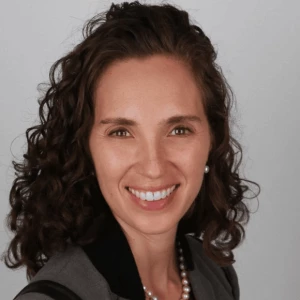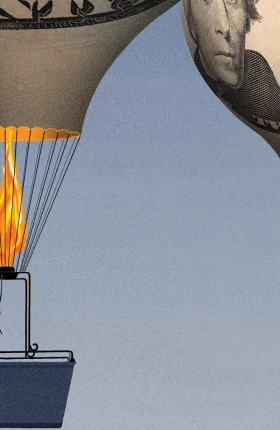The aerospace and defense industry is in the midst of a major expansion, but talent is a limiting factor. The current A&D workforce is aging, and many OEMs are struggling to fill key roles—a challenge that will only get harder as demand increases. One solution is to do a better job of recruiting and retaining women. Women hold top positions in many leading A&D companies, but they have historically been underrepresented in the broader A&D workforce. The industry’s traditional sources of talent (engineering programs) and its leading customers (departments of defense) are mostly male and have been for decades.
BCG’s research into gender diversity has produced several findings that are directly relevant to the A&D industry. First, companies that are more diverse—particularly at the senior level—are more innovative. (See “How Diverse Leadership Teams Boost Innovation,” BCG article, January 2018.) Second, many companies tend to throw money at gender diversity initiatives based on what they think will work, rather than on a clear understanding of what the most effective measures actually are. (See Getting the Most from Your Diversity Dollars, BCG report, June 2017.) That’s an approach that no industry—particularly an engineering-based discipline like A&D—should apply to a strategic problem.
Instead, A&D leadership teams need to look at the data and invest in the measures that will lead to the biggest payoff. Those measures are not unique to A&D; BCG has found that many of the same solutions apply across industrial goods companies overall. But given its pressing talent needs, the A&D industry needs to take more rapid and decisive action. Our research indicates that the solutions include several table stakes measures such as structural interventions, visible role models, and the guarantee of a bias-free daily work experience. They also include “hidden gems”—measures that men typically undervalue but that are highly effective.
A Looming Growth Wave
The A&D industry is a critical part of the US economy in terms of employment and contribution to GDP. (The industry includes airframe, space, and defense OEMs and suppliers, but not airlines or operators.) Overall, the industry represented 2.4 million jobs, $865 billion in sales, and $143 billion in exports as of 2017.
Those numbers are likely to keep growing, given that the industry is enjoying a period of unprecedented expansion. On the defense side, the US Department of Defense budget is projected to increase from $660 billion in 2017 to $790 billion in 2023. On the commercial aerospace side, OEMs are benefiting from growing global demand for air travel (rising at a compound annual rate of nearly 4%, which will lead to a doubling of overall demand between 2017 and 2036). The result is an unprecedented “supercycle” of rising demand for airframes that is projected to continue for at least five more years.
The industry’s growth is increasing the need for talent throughout the value chain. OEMs, suppliers, maintainers, and other entities will all have to expand their workforce to meet this demand. Factor in the aging workforce at many A&D companies—where 50% of employees are over the age of 50—and the demand for talent is virtually unprecedented. Already, A&D companies face a maintenance labor shortage; in the US, a 9% gap between supply and demand for aviation mechanics is predicted by 2027. Other companies face a significant leadership dip among employees aged 40 to 50. And many of the most qualified potential job candidates—those with advanced degrees in engineering or related fields—are shunning traditional A&D companies, opting instead to work in Silicon Valley.
Diversity at the Top but Inadequate Overall
By some measures, the A&D industry is ahead of others in terms of women in leadership positions. Many of the biggest and best-known OEMs and business units are led by women:
- Marillyn Hewson leads Lockheed Martin, the world’s largest defense contractor.
- Phebe Novakovic, who served in the Pentagon and the CIA, is CEO and chairwoman of General Dynamics.
- Kathy Warden is CEO of Northrop Grumman.
- Leanne Caret is CEO of Boeing’s Defense, Space & Security unit.
Overall, one-quarter of executive-level positions at A&D companies were held by women in 2018, a much higher share than at most technology-heavy companies and roughly in line with the 22% share of women in the overall A&D workforce. That’s a clear contrast with many other industries, where the share of women decreases—often dramatically—with rising seniority.
Still, in absolute terms, a quarter share in the workforce and in the executive suite is far too small. In addition, many women in A&D work in support functions such as HR, legal, finance, and marketing, rather than in operational roles. For example, only about 15% of A&D engineers are women. These numbers have been relatively unchanged for the past two decades, despite the number of high-profile women now leading OEMs. As long as women are underrepresented in critical operational and engineering roles, the industry will be hard-pressed to meet its talent needs.
The A&D industry also faces a unique challenge: engineering programs and defense departments, its main sources, respectively, of talent and customers are mostly male. Only about 20% of engineering graduates are women. In the US Department of Defense, women make up only 34% of the civilian workforce, compared with 48% of US workers overall. As a result, A&D companies cannot look to their customers for sources of female talent or a blueprint for change.
To identify solutions, A&D companies should look to the data-based actions adopted by other industrial goods (IG) companies, which face similar challenges. In a recent BCG survey, 38% of women across all industries said that recruiting was a key obstacle for them, compared with 47% of women in IG (including A&D) companies. The same differential shows up in advancement and retention—48% of women in IG said that retention is a problem, versus 40% for the full group of female respondents. (See Exhibit 1.)
More troubling is that 47% of female respondents in IG (including A&D) companies said they have personally experienced discrimination, compared with 38% of women in all industries. Even when such discrimination is not deliberate or overt, male-dominated cultures can produce unfair situations that build up over time and make work feel like a struggle rather than an environment where women can thrive. This is not an easy problem to solve, but it is entirely within a company’s control.
Data-Driven Measures
To be clear, many A&D organizations have already taken steps to bring more women into the workforce and into leadership roles. The problem is that those measures have not yielded results. In our survey, 98% of women at IG companies, including those in A&D, said that their companies have gender diversity programs in place, but only 31% said that they have personally benefited from them.
Rather than choosing interventions on the basis of hunches and gut instinct, companies should identify the measures that are most likely to have the biggest impact. This requires looking at solutions from the perspective of those whom they’re intended to benefit, namely, women themselves.
The steps that A&D companies need to take to improve gender diversity are in line with the measures that most IG companies need to take. We asked both men and women at IG organizations to rank the gender diversity measures that they believe are most effective. Those that both men and women agree on we call table stakes initiatives. Others show a large disparity between genders; we call them hidden gems.
In our survey, only 31% of women at IG companies said they have personally benefited from gender diversity programs.
Table Stakes Measures
First, companies should establish a baseline by investing in initiatives that both men and women agree are effective. For IG firms (including A&D companies), there are three specific measures that both groups ranked in the top ten among all diversity initiatives:
- Structural Interventions. Companies need to take steps to make the physical workplace more accommodating to pregnant women through features such as lactation rooms and dedicated parking spaces.
- Visible Role Models. Companies should highlight senior female executives as role models. These women need to be celebrated and encouraged to discuss how they dealt with the kinds of career challenges that female employees and managers often face. In a way, A&D companies have an advantage in this area, given that many A&D CEOs and executives are women. Still, the numbers are not so high that there are sufficient women to serve as role models throughout the organization. Many more women in a range of senior positions are needed to model different leadership styles and career paths.
- Guarantee a Bias-Free Day-to-Day Experience. As noted above, women in IG organizations are more likely than women in other industries to have faced discrimination, and such experiences can accumulate and sap ambition. Often these are cases not of outright discrimination but of attitudes and traditions that are deeply rooted in the organizational culture. To counteract them, teams celebrating the end of a successful project, for example, can select a gender-inclusive venue that all members are likely to enjoy. And because A&D companies are male-dominated, teams should be aware of self-selection bias and situations in which it is likely to occur.
Hidden Gems
Next, organizations should invest in initiatives that men typically undervalue but that women consider effective. Our research highlighted eight such measures. (See Exhibit 2.) Critically, the first five are less expensive and can be implemented rapidly. For A&D companies, these five measures represent the best opportunity to make quick, visible changes that can translate into immediate impact across the organization:
- Antidiscrimination Policies. Many organizations treat antidiscrimination policies as a compliance-type obligation. But creating and communicating them can be a valuable chance to distinguish the company from its competitors by taking a strong stand on diversity. A&D companies need to ensure that these policies are sound, that employees read them, and that they include processes for swiftly dealing with discrimination when it happens.
- Participation in External Events and Rankings. A relatively low-cost way to increase a company’s profile among women is to participate in external events and rankings that promote gender diversity. The most likely candidates are those companies that have good news to report, allowing them to differentiate themselves from the competition. One caveat: this is an outward-facing measure that doesn’t meaningfully change women’s day-to-day work experience in the company. As a result, it’s most effective as a recruitment tool.
- A Specific Diversity Strategy. Leadership teams in A&D execute their business strategies based on data; they should apply the same approach to diversity. Rather than launching feel-good measures, they should conduct diversity programs with a clear business case and an explicit strategy for achieving their goals.
- Public Transparency on Diversity Gaps and Progress. When gender diversity is treated as an internal goal and only HR leaders and the C-suite see the actual numbers, it’s all too easy to kick the problem down the road. Instead, companies need to go public with their diversity goals and with their progress in achieving those goals over time. In other words, leaders need to establish momentum; otherwise, they’ll see their credibility with employees and other stakeholders diminish.
- Training (Such as in Bias Awareness). Because many gender-related problems are deeply woven into the culture of an organization—particularly at large organizations with long histories—spotting them often requires formal training from outside experts. Bias awareness is a good example. Most people don’t think they’re biased, yet the research shows that virtually everyone is to some degree. Training leaders, managers, and employees to identify and mitigate gender bias needs to be comprehensive, continuing, and solution-oriented. The right degree of training requires ongoing investment and commitment.
The remaining three hidden gems are formal programs that take longer to implement but are still important for increasing gender diversity:
- Flexible-Work Programs. Like antidiscrimination policies, flex-work programs are in place at most companies, but many are simply not effective. What goes wrong? In some organizations, such programs can be stigmatizing. In others, they are limited to mothers with young children. The best flexibility programs are designed so that both men and women can take advantage of them, from frontline employees to senior executives. They include a range of options—telecommuting, flexible hours or days, scaled-down responsibilities—and they ensure that people aren’t punished for opting in. Flex-work programs are especially valued by younger workers, meaning that A&D companies can differentiate themselves and more effectively recruit talent by leading in this area.
- Parental Leave. There is a growing case that paid parental leave policies can have a measurable effect on recruiting and retention. One study found that women who take parental leave are 93% more likely to be with the same employer 9 to 12 months after a child’s birth than women who take no leave. (See Why Paid Family Leave Is Good Business, BCG report, February 2017.) In the US, where paid parental leave is not required by law, such policies are an obvious way for companies to differentiate themselves in the market for talent.
- Child Care. Finally, A&D companies can more effectively recruit and retain women by offering child care programs, such as on-site care, emergency backup care for the inevitable last-minute crisis, or babysitting referrals. These programs are not cheap, but they generate a return by ensuring that working mothers can get to the office and focus on their work. (See “Making the Workplace Work for Dual-Career Couples,” BCG article, July 2018.) Notably, although these programs are often targeted at women, they offer an ancillary benefit to younger men, who are more likely than their older counterparts to take on child care responsibilities. (See “How Millennial Men Can Help Break the Glass Ceiling,” BCG article, November 2017.)
The future of the A&D industry is extremely bright, with projected growth that most other sectors would covet. But to capture that growth, the industry needs a smarter approach to talent. It does not need to invent solutions but rather to take decisive, rapid action on the solutions that apply across most industrial goods companies. By effectively recruiting, retaining, and promoting women, A&D companies can equip themselves to meet rising demand. They will also create a more balanced and equitable workforce. That’s good business and—perhaps more important—it’s only fair.











